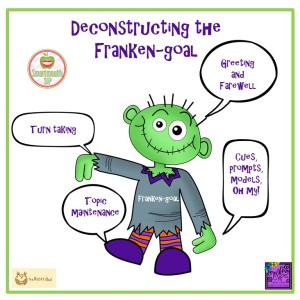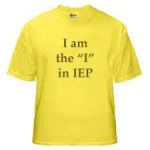
There are BIG international sports competitions that are starting this month and while I am not watching all the events, I do love the moving highlights of the athletes’ personal stories. The details differ a bit here and there, but what strikes me is the theme that their journey to reaching their goal usually started with the end, not the beginning. Visualizing themselves winning an event, standing on the podium and receiving a medal were all part of the training process for these elite athletes way before they qualified for the first event. This wasn’t daydreaming, it was purposefully envisioning what they wanted to see in their futures.
This idea isn’t just for athletes, it applies to our students too. SLP Sarah Ward , of Cognitive Connections, presented at our GOSSLP conference I attended earlier this year. Her focus was on beginning with the end in mind when developing executive function skills, an “a-ha” moment for me as a SLP! She shared a fun therapy technique of putting on our “future glasses” (any funky sunglasses you could find in a dollar store or even making and decorating your own paper versions) to visualize ourselves walking through a plan successfully. If you start with the finish in mind, it’s easier to visualize the steps you need to take to get there. If you don’t know where you are headed, it’s easy to get lost.
It’s the beginning of a brand new school year for me and this visualizing technique is something I want to try for myself and my students! Why not think about where you want your therapy sessions to lead ? How do you see yourself developing new skills this year? What about teaching your students to “see” themselves in the future with clear articulation, strong social skills or participating in a class discussion successfully? For my students with social language impairments, it is hard to put themselves in someone else’s shoes, including their own in the future! This visualization may help motivate us through the difficult times when we don’t see progress, have a set back, or we are just plain tired. This would be a great way to start your first few sessions this year when you are setting your goals with your students!
Would you use visualizing with your students or yourself in speech therapy this year? Why or why not? Share here!
 I read a lot of IEPs during the school year as I supervise CFs and mentor new hires in my large county of almost 200 SLPs. I support all areas of communication with my speechies, but social language is the area near and dear to my heart. Because of this, I see a lot of goals written regarding conversation and turn taking. Turn taking in and of itself is an important skill, both verbally and non-verbally. We can’t function as a “me first/all about me” community…unless you have a show on the E! network. However, I cringe a bit when I come across a goal that looks like this:
I read a lot of IEPs during the school year as I supervise CFs and mentor new hires in my large county of almost 200 SLPs. I support all areas of communication with my speechies, but social language is the area near and dear to my heart. Because of this, I see a lot of goals written regarding conversation and turn taking. Turn taking in and of itself is an important skill, both verbally and non-verbally. We can’t function as a “me first/all about me” community…unless you have a show on the E! network. However, I cringe a bit when I come across a goal that looks like this: